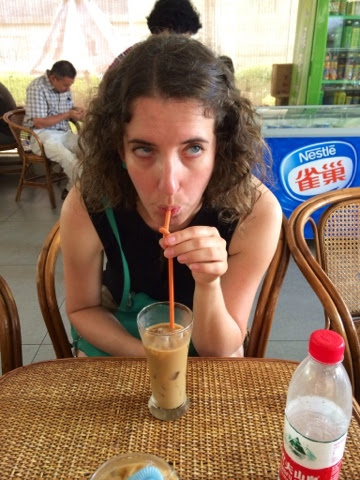China has had its fair share of chaos throughout history. Back in the day, about 250 BCE (also known as BC for people down with sweet baby Jesus), there were many warlords vying for power in China. One man rose to unify warring groups using language, economics and good old fashioned violence.
Before he died however, work was started on a masoleum, or funerary tomb for the emperor when he ascended to his throne at the age of 13. It was a project that was grand in size, involving over 700,000 workers and taking 37 years to complete. The result was to later become known as the famous Terracotta Army and today we traveled to see it.
The song line, "I've got a golden ticket," from the old school Charlie and The Chocolate Factory movie ran through my head when this admission ticket was handed to me. I think I even skipped a bit on the way in.
In 1974 local farmers were minding their business and plowing their field. They needed a well so digging began. The shovel hit something and what they found caused the local authorities to contact archaeologists immediately.
What they found were a collection of terracotta sculptures depicting the armies of Qin Shi Huang. All of them. It is a form of funerary art meant to protect the emperor in his afterlife.
Pits exist with unearthed figures. There are two reasons given for this. The first is that the technology to unearth them and preserve the paint. Paint on figures already unearthed began to flake and fade. Lacquer was used to cover the paint, but can curl within as fast as 15 seconds once dry air hit it. Structural integrity and preservation are problematic.
The second reason was that the Chinese feel that this also gives time to preserve the find for future generations. China's rapid rates of urbanization have people here concerned with cultural preservation. Rightfully so.
Heads, arms, legs and torsos were created seperately and then put together. Each face was designed resembling each individual in the army. No two are the same.
After each was made it was placed in precise military formation according to rank and duty.
Walking through the museum I came around a corner and saw a ton of people crowded around a display pushing into eachother and snapping photos. The amount of flashes in the room made me think that paparazzi were on the loose. Suddenly I felt a hard shove from behind only to turn around and see an old woman about 80. Bring it on I thought, but quickly changed my mind. She was a woman on a mission. The elderly if this country are fit as fiddles. If it came to a throw down between us, she would have wiped the floor with me. I stood aside. Quick.




















No comments:
Post a Comment